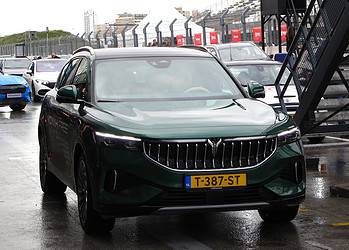FedEx is set to start delivering US parcels with its brand-new electric delivery vans from General Motors’s EV subsidiary BirghtDrop. The transportation company has already received five of the 500 vans it purchased, which will be first rolled out in the state of California and then expand to other locations across the country.

Electrifying deliveries
The delivery vans are powered by Ultium batteries, with an estimated range of up to 250 miles (400 kilometers) on a full charge. The vans are designed for the delivery of goods and services, with a cargo area of 600 cubic feet. FedEx is now building charging infrastructure in its facilities, having already installed 500 charging stations across California.
“The delivery of the first EV600s is a historic moment, born out of a spirit of collaboration between two leading American companies,” Mitch Jackson, Chief Sustainability Officer at FedEx, said in a statement. “Transforming our pickup and delivery fleet to electric vehicles is integral to achieving our ambitious sustainability goals.”
Last year, FedEx set out the goal to have a zero-emission, all-electric global pickup and delivery (PUD) fleet by 2040. As part of that plan, FedEx Express, its subsidiary, wants to make 50% of its global vehicle purchases to be electric by 2025 – rising to 100% by 2030. The collaboration with General Motors will now help to achieve those targets, FedEx said. But it’s a long and winding road to electrifying the company’s fleet.
A long-search for EVs
Before partnering up with General Motors, FedEx had long been searching for a reliable EV supplier around the world. The company first reached a deal with the startup Chanje to buy 1,000 electric delivery vans. But then Chanje shut down and failed to make good on its promise, prompting FedEx to start a legal battle with the startup that is still ongoing. This also forced FedEx to find a different supplier, further delaying the transition to electric vehicles. But that transition seems to start taking place now, thanks to a partnership with General Motors.
General Motors unveiled in June its new delivery and logistics business, BrightDrop. The announcement came as GM is undergoing a massive pivot to the business of manufacturing electric vehicles. The company will increase its investment in EVs and autonomous vehicles to $35 billion through 2025 – a 75% hike from pre-pandemic levels. All in all, it’s a perfect option for FedEx.
“BrightDrop is thrilled to partner with FedEx in our mission to dramatically reduce vehicle emissions from delivery and deliver a brighter future for all of us. FedEx has ambitious sustainability goals, and the speed with which we brought the first BrightDrop electric vehicles to market shows how the private sector can innovate,” Travis Katz, CEO of BrightDrop, said in a statement.
FedEx was the first delivery company to use hybrid vehicles for pickup and delivery back in 2003. A few years before, in 1994, the company used its first electric vehicle, powered by an acid battery, in California. FedEx currently has more than 200,000 operational motorized vehicles, of which almost 3,000 are either electric or hybrid. Now, the company hopes to raise the bar once more and raise the bar in the transportation sector and electrify its fleet as quickly as possible.






